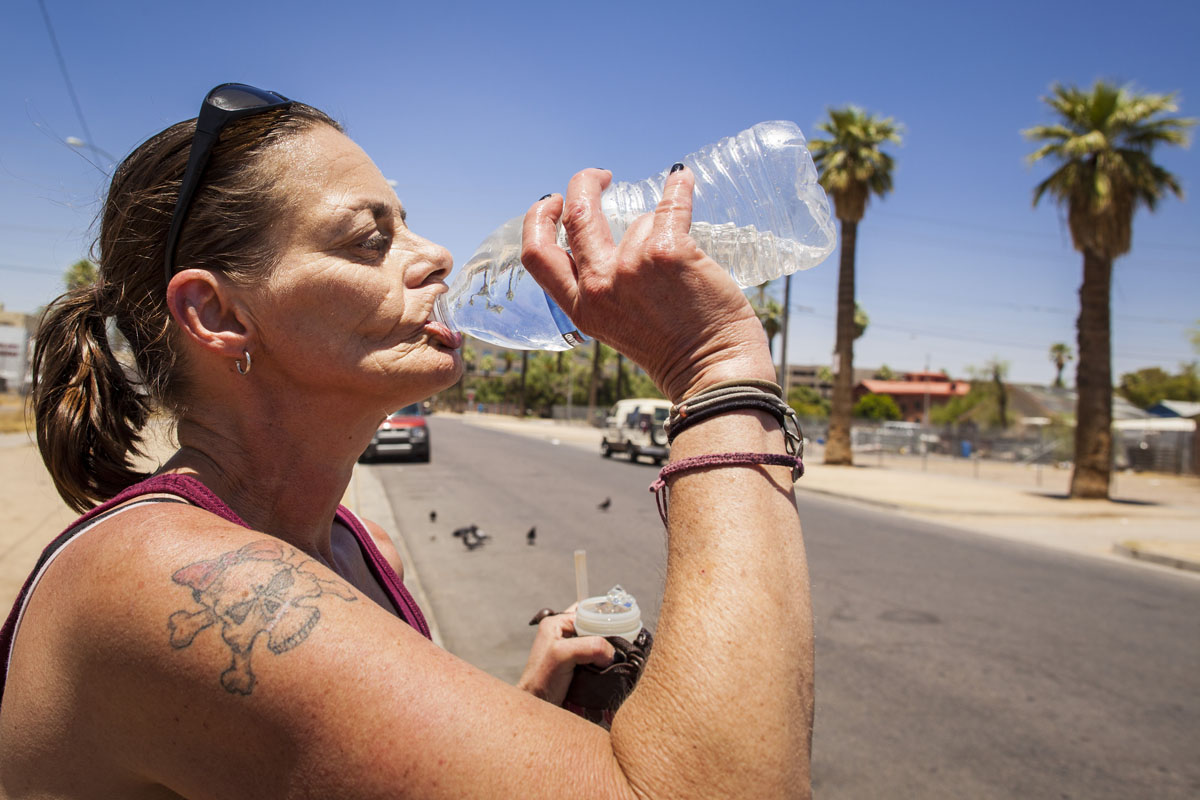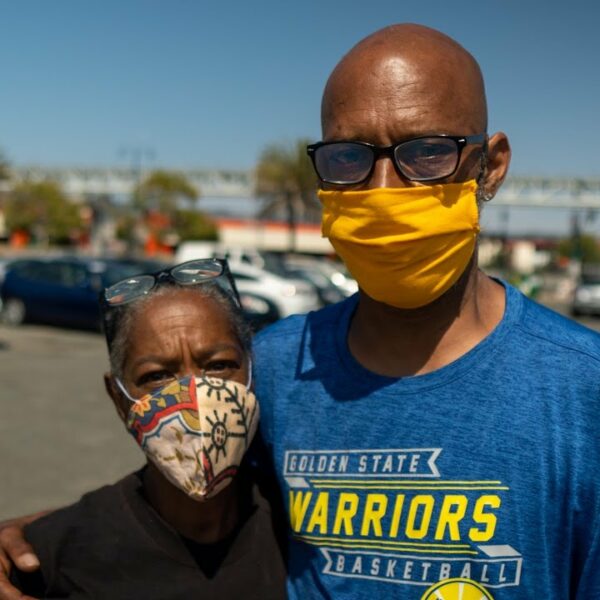It’s officially summer, and although we all hoped otherwise, COVID-19 is still around. In fact, COVID-19 rates are rising in many states, with some hitting record numbers of cases and/or hospitalizations. Many of these states, such as California, Arizona, and Texas, are also the hottest.
Summer is an especially dangerous time to be homeless. Before COVID-19, homeless people relied on shelters or indoor public spaces to cool down. These places closed when the pandemic began. With the new rise in cases, re-opening seems farther away than ever.
What does this mean for homeless people, who have no reprieve from the sweltering sun?
Numerous Dangers Without Shelter
Summer has always been a hard time for people without homes. Extreme heat is the second largest weather-related cause of death in the U.S. Fifty-three percent of homeless people live in two of the hottest states in the country: Florida and California. Heat-related dangers homeless people face include:
- Dehydration: Using medication and alcohol, which many homeless people do, places them at increased risk for dehydration. Dehydration can result in delirium, brain damage, and seizures.
- Heat Exhaustion and Heat Stroke: Fatigue, dizziness, fast and shallow breathing, nausea and vomiting, clammy skin, and a weak pulse are signs of heat exhaustion. If untreated, it can progress to heat stroke quickly.
- Poor Hygiene: Sweat-soaked clothes and shoes can lead to rashes, infections, and even trench foot. People who are homeless may only have one set of clothes, making them especially vulnerable to these conditions.
- Worsened Mental Health Conditions: Extreme heat has been shown to increase depression and suicidal thoughts. Insomnia, resulting from being too hot to sleep, leads to poor sleep and exacerbated mental illness. Heat stress also weakens memory, focus, and reaction times.
All of these conditions can be deadly. Homeless people, who might not have transportation or a cell phone to call 911, are even more susceptible to dying from them.
Before COVID-19, there were always places homeless people could go to escape the sun for a bit. In recreation centers, libraries, malls, and shelters, people could enjoy the AC and get some water. Now, there are no reliable places of refuge.
It isn’t always that the shelters are closed, either. For ones that are open, many are required to maintain half capacity. They fill up quickly, and when they do, there’s no wiggle room. Some homeless shelters, like the Wilkes-Barre Salvation Army shelter in Northeast Pennsylvania, used to let a few extra people in here and there for a quick break. With social distancing mandates in place, it’s now illegal for them to do so.
How are Cities Handling This Health Crisis?
Many shelters are finding other ways of helping homeless people. While nothing might feel quite as good as a burst of AC in the summer heat, many city governments and community-serving agencies are still finding ways to help their local homeless populations.
In Phoenix, Arizona, 75 stations have been set up around the city to offer hydration and cooling. These are not shelters, but facilities people can visit for a short period of time to cool off and get some water. Social distancing must still be maintained, but the addition of these “hydration stations” takes some of the burden off the overnight shelters.
Other cities are selecting new places for homeless people to stay when shelters are full—essentially, overflow shelters. Fort Collins is renting rooms for homeless people to stay in, and this tactic is being used in several other cities as well, including Phoenix. However, to qualify to stay in the rooms, people often need to have underlying medical conditions making them more susceptible to COVID-19 complications. This means many people, who are just as susceptible to death by heat stroke, do not qualify.
New York City is using auditoriums and sports venues as cooling shelters, with social distancing rules in place. Houston is doing the same. Austin, Texas city officials were considering a plan to dispatch city buses to act as cooling centers. Shelters like the Wilkes-Barre Salvation Army shelter give out water bottles instead of letting extra people inside.
These solutions are creative, and they will certainly help. However, challenges remain, like getting the word out and giving everyone who needs the resources equal opportunities to use them.
What Can I Do?
If you are fortunate enough to be housed during this public health crisis, there are plenty of ways you can help those who aren’t.
1) Donate, donate, donate. Relief stations and shelters need donations of bottled water, food, sunscreen, hats, light-colored shirts and pants, and many more survival items. Contact resources in your area or visit their websites to learn which items are needed most. One thing they will always need more of is water.
Donations of hygienic products like hand sanitizer and soap are also needed. In addition to protecting the health of the vulnerable homeless population, these items keep agency staff healthy so they can continue serving them.
2) Volunteer. Agencies such as Salvation Army need volunteers to help operate cooling centers. Shelters may need to get by with fewer staff due to social distancing guidelines, but enough pop-up stations and shelters have arisen to demand more workers. If you are able and willing to help, consider doing so by reaching out to your local non-profits and asking what they need.
3) Help spread the word. Learn about the resources in your area for cooling off and getting supplies. See if your city and local agencies have flyers you can hand out to build awareness and knowledge about help that is available. If you see someone struggling in the heat, offer directions to the nearest one. For people who cannot access the internet or newspapers, word-of-mouth is all they have.
These are scary, bleak times, as COVID-19 continues to cause suffering directly and indirectly.
It’s important to remember, though, that there are many people who are working hard, making sacrifices, and at times risking their own health to help the people who are most vulnerable. Anything you can do, whether it be providing funding for supplies or doing the actual leg work, goes a long way.
Finally, never stop putting pressure on your legislators to enact change. Even though COVID-19 makes many of us feel like our hands are tied, systemic change is always possible with a shift in perspective. When those in power stop viewing the suffering of homeless people as a ubiquitous part of society, and instead see it as a problem they can solve, resources and funding will no longer be scarce.













